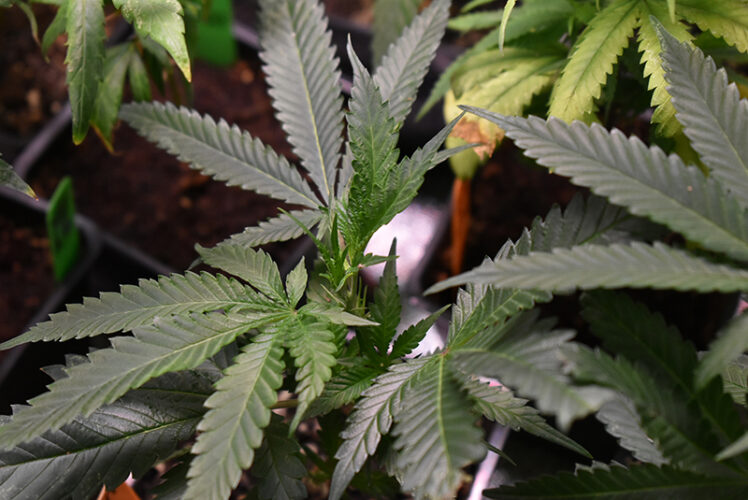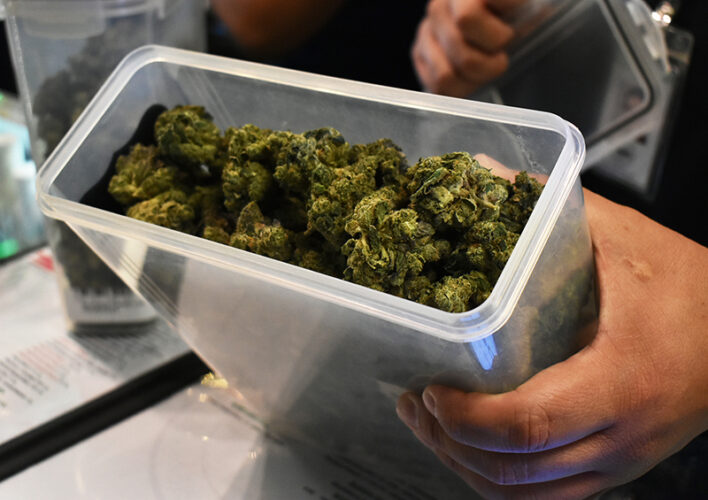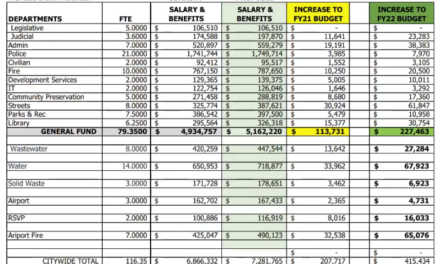It’s been almost two years since adult recreational marijuana sales began in New Mexico, and a big push for legalization was the economic reward the state and municipalities would reap.
According to the New Mexico Regulation and Licensing Department’s website, recreational cannabis sales have so far generated more than $608 million statewide. A press release from the New Mexico Taxation and Revenue Department stated as of September 2023, more than $47 million in cannabis excise taxes has gone to the state’s general fund and to local governments.

Felina Martinez | News-Bulletin photos
According to the New Mexico Taxation and Revenue Department, more than $47 million in cannabis excise taxes has gone to the state general fund and to local governments as of September 2023.
A new stream of revenue means new opportunities. Colorado, for example, has put money generated from recreational cannabis toward human services, infrastructure, school facility improvements and a whole variety of programs.
In New Mexico, one proposal that was tabled at last year’s legislative session proposed dispersing the money toward substance abuse treatment and education programs.
While the state seems to be seeing a significant impact, has it made a big difference locally on the budget of municipalities in Valencia County? The short answer, from all local municipalities who have shops in their jurisdiction, is no.
“Not that it’s not useful or appreciated, but at one third of one percent of our estimated general fund revenue, it won’t make a significant difference,” said Los Lunas Village Administrator Greg Martin.
According to NMRLD’s website, the village of Los Lunas has had almost $8.5 million in adult use sales since legalization. This has so far generated about $266,640 in recreational cannabis excise tax for the village.
Martin said village staff estimates GRT revenue from cannabis to amount to $120,000 annually.
“To put the estimated annual GRT revenue amount of $120,000 into perspective, it’s about what we would spend on two activity vans for our recreation programs, or about what we have budgeted in our police department for uniforms for one year for approximately 50 employees,” said Martin.
Municipalities receive one-third of the excise tax generated through recreational cannabis sales, and the rest goes to the state. The New Mexico Department of Finance and Administration also requires local governments to create a separate fund for cannabis tax revenue in which municipalities can choose how and when they want to spend the money.
Martin said the revenue will most likely be transferred into the village’s general fund, but he is not sure when this will be. He said February at the earliest, but there is not a set date.
Martin also said the Los Lunas Council has not given much thought yet as to what it should be spent on because they are currently focused on other priorities.
According to NMRLD, Bosque Farms has had about $113,295 in adult-use sales and has received $1,403 in cannabis excise tax to date.
Since legalization, there were several months when Bosque Farms did not receive any cannabis GRT revenue. Bosque Farms Village Administrator Vernon Abeita said this was likely due to medical sales, which are not taxed, so the municipalities do not receive any GRT from these sales.
Currently, recreational cannabis sales have a 12 percent excise tax rate state-wide in addition to the retail tax.
Abeita said the Bosque Farms Village Council has not yet discussed or made any decisions as to how this money should be spent.
To date, Peralta has received $19,689 in cannabis tax revenue as a result of almost $1,457,000 dollars worth of adult-use sales. Town Clerk Kori Taylor said funds will be put toward community recreation and will help cover expenses for the recently-completed park. She estimates cannabis excise tax funds will begin to be used this year at some point.
However, recreational cannabis revenue municipalities receive is not exclusively tied to excise tax. Revenue also comes in the form of retail tax, but this number is not easy to discern because retail tax revenue is pooled together into one large fund, which doesn’t make any distinctions as to where the money came from beyond retail. Knowing this, the true economic impact of recreational cannabis revenue lies beyond excise tax, how much though remains to be seen.

Municipalities receive one-third of the excise tax generated through recreational cannabis sales; the rest goes to the state.
From almost $3,695,000 in adult use sales to date, the city of Belen has received about $88,000 in excise tax revenue. Belen City Manager Roseann Peralta said she anticipated the city’s yield to be higher.
“It’s nice to have that additional revenue but if you compare it to what the state is gaining from it, it’s kind of interesting how they’re making a lot of money off it and we’re not,” said Peralta. “We thought it would be treated like our regular GRT taxes, but (the state) is taking a bigger percentage.”
Peralta said any business is good for the city though, and it’s nice to have somebody in buildings that would otherwise be empty. She also appreciates that municipalities can choose where they want the money to go.
There has been some discussion about putting the money toward quality-of-life projects in Belen, Peralta said, but the council has not yet made an official decision.
“Right now, we’re averaging $4,500 a month in revenue and our current projection for the fiscal year is about $55,000, but let’s see what happens,” she said.
The city of Belen approved an ordinance last month that limits the number of cannabis retail stores to seven citywide.
As the recreational cannabis industry continues to evolve, so will the monetary return. According to the New Mexico Tax and Revenue Department, the cannabis excise tax amount will remain at 12 percent until July 2025. After that, it will gradually rise to 18 percent beginning July 2030.
Felina Martinez was born and raised in Valencia County. She graduated from the University of New Mexico in 2021. During her time at UNM, she studied interdisciplinary film, digital media and journalism. She covers the village of Los Lunas, Los Lunas Schools, the School of Dreams Academy and the town of Peralta.


















